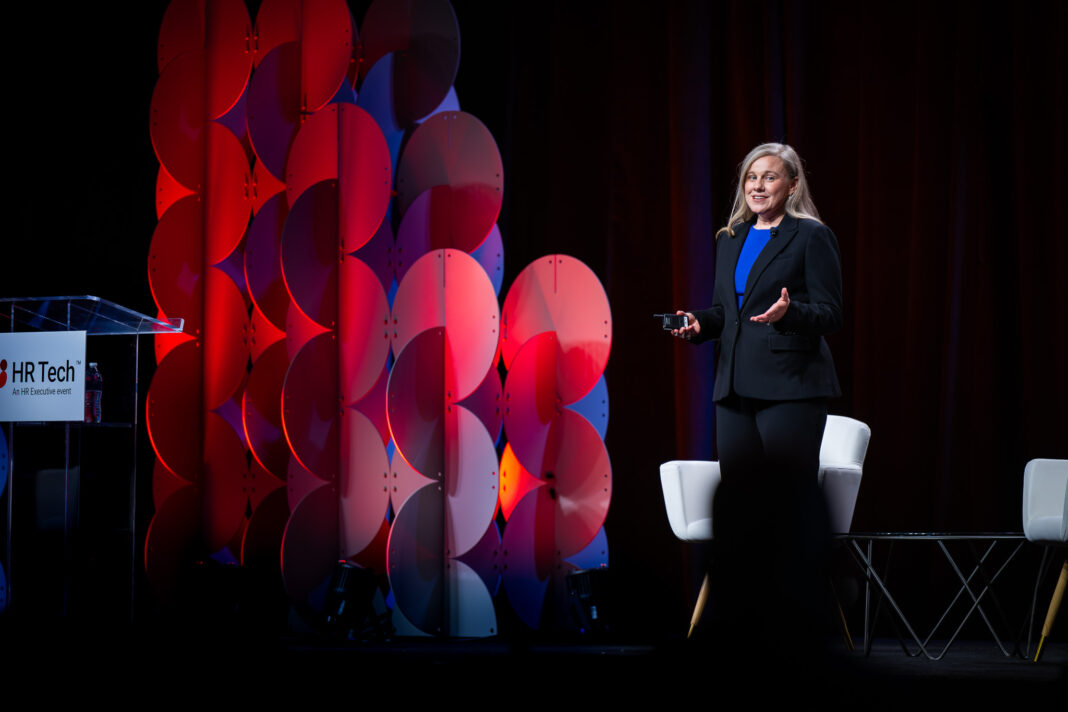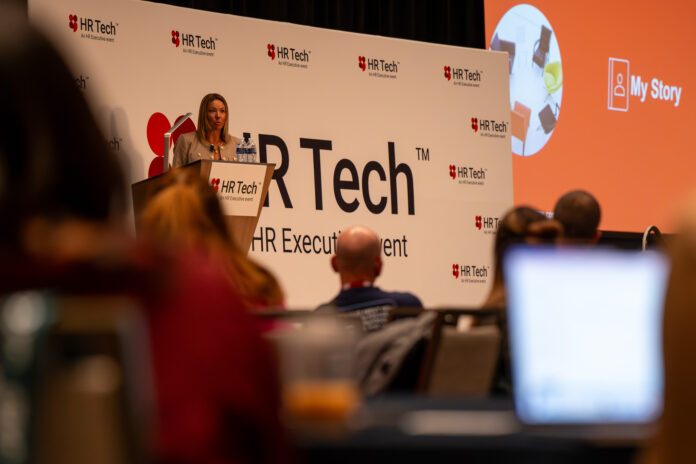The ‘sandwich generation’ presents a growing caregiving crisis for HR
- HRM Asia Newsroom

America’s sandwich generation caregivers—adults simultaneously caring for children and ageing loved ones—are nothing new. What is novel is the context in which this caregiving is being delivered and the sheer volume of Americans taking on this role, experts say. Without stronger support from employers, they predict, both employees and organisations are going to suffer in the coming years.
According to Pew Research Centre, about 54% of Americans in their 40s—prime working age—have a dependent child and a living parent over the age of 65. AARP puts the total number of American caregivers at about 53 million—a figure that has grown by more than 20% in the last five years.
That sandwich generation is about to get a lot bigger, and employers are not prepared, says Seth Sternberg, CEO of Honor, the operator of the world’s largest in-home care network.
‘Massive societal shift’ on the way
By 2034, Sternberg says, the share of Americans over age 65 will top the under-18 population. And in the next 25 years, the over-80 population is expected to nearly triple.
“There’s going to be a huge boom in the number of older adults who need care,” Sternberg says. “There’s a massive societal shift we’re undergoing that I think people don’t see because they’re so focused on youth.”
Employers whose caregiving programmes and benefits on childcare to the exclusion of eldercare are “missing what is going to be the biggest demographic,” Sternberg says.
To support the growing group of sandwich generation caregivers, employers need to rethink their entire approach to employee benefits—shifting towards a “whole-life support system,” says Ruth Veloria, Chief Customer Experience Officer at University of Phoenix. The university recently released survey findings on sandwich generation caregivers and the impact on employers.
“Benefits do not have to be just about retention,” she says. “They can really help people thrive.”
The struggles facing sandwich generation caregivers
Right now, many sandwich generation caregivers are not thriving—and the statistics are alarming.
“Sandwich caregiving is a juggling act that involves both the physical side, which requires intentional planning and structure, and the emotional journey,” says Karishma Patel Buford, Chief People Officer at mental health solution provider Spring Health.
A report from the National Institutes of Health found that sandwich generation caregivers reported “substantial” financial challenges at a rate twice that of other caregivers and had a higher prevalence of “emotional difficulties.”
The reasons why are clear. Apart from the obvious emotional labour dual caregivers must expend caring for youngsters and older, potentially ailing, loved ones, there are the tremendous logistical impacts that drive up stress, Veloria says. This includes balancing work commitments with dropping off and picking up kids from school and activities, while taking ageing loved ones to doctors’ appointments, all while trying to meet the rising costs of childcare and eldercare.
“Time and money are having a bigger impact than ever,” she says.
This “juggling” act is happening amid significant “noise,” Veloria adds—“lots of information and messaging and communications across multiple platforms: work apps, school apps and notifications, healthcare apps and not to mention emails and phone calls.”
“It’s exhausting, emotionally and financially,” she says.
More challenges for working moms
It is a burden disproportionately affecting women. Pew Research found that 60% of sandwich generation caregivers are women.
The University of Phoenix study focused on working moms in the sandwich generation, finding that more than half say their paychecks go to caregiving responsibilities—more than double the rate for women who are not dual caregivers. Nearly two-thirds say they use their PTO and sick time for caregiving, and three-quarters have had to take time off multiple times throughout the year to unexpectedly care for an ageing loved one.
The responsibilities are having a measurable impact on women’s career progression, the organisation found. Sandwich-generation working moms are more likely than others to skip networking or development activities, and to feel stressed, frustrated and isolated.
46% of those surveyed said their caregiving has held their career back, while more than half have left a job because of their caregiving responsibilities.
Deepening the crisis is that many women are trying to keep their caregiving struggles under wraps at work, “to avoid being seen as less committed or capable,” Veloria says.
“The report shows that nearly half of sandwich moms are afraid to talk about their caregiving responsibilities at work, and many feel isolated or even judged when they do,” she says. “There’s also a sense that it’s okay to mention childcare, but not eldercare—and that silence can weigh heavily, especially for those who are juggling both.”
A broader approach to benefits
Traditional workplace benefits around caregiving, Buford says, typically “force a choice” between childcare or eldercare, leaving “many employees quietly managing both.”
University of Phoenix’s report found that two-thirds of women say their employer’s benefits are insufficient to meet their eldercare needs, while slightly more say the same about childcare. Even if benefits are more robust, 30% of respondents say they lack the time to access supportive resources.
A “whole-life support perspective” on employee benefits can help organisations bridge the gaps dual caregivers are facing, Veloria says. This includes care resources across the age spectrum and subsidised care options.
Employees need “quick access to therapy, coaching and support groups specifically for caregivers,” Buford adds, along with resources to support financial health and navigate caregiver decision-making, such as around long-term care.
Access to “adaptable work arrangements” will be particularly critical, she says.
This can include remote or flex-work options, Veloria says, along with work-sharing and “on-the-job learning that fits into caregivers’ packed schedules.”
University of Phoenix found that when evaluating a job, sandwich generation women prioritise schedule flexibility, followed by paid time off offerings and remote work options.
“Sandwich generation workers want to put in the needed work to grow in their careers,” she says, “but they need the flexibility to do their work outside of typical hours or expected spaces.”
‘More parents than kids’
The chasms in support facing sandwich generation caregivers, Sternberg says, are so vast that they are going to require new, innovative partnerships.
“We need to build the systems, the benefits, the products to reduce the load” of dual caregivers, he says, particularly as the risk grows for cuts to government services that support ageing populations. “We’re not going to be able to count on the government, so we—employers and product companies—need to think societally.”
READ MORE: Beyond 60: Why HR holds the key to a human-centred retirement rethink
Sternberg sees Honor’s contribution as a piece of this puzzle. The organisation connects families with in-home care providers who can assist clients with activities of daily living—such as dressing, cleaning, and feeding—with the goal of helping them live independently in their own homes and reduce the burden on their loved ones.
Childcare and eldercare: Create a mirror image
Honor, which acquired Home Instead four years ago, gives clients access to local care—a critical component as many working-age Americans face having to relocate or move an ageing loved one to be their caregiver. Honor offers “near-nationwide” coverage, Sternberg says—nearly three times the size of the nearest competitor—which he says resonates with employers looking to create a benefit with real meaning.
An employer in Chicago, for instance, can leverage Honor to connect an employee’s parents in Pensacola, Fla., with in-home care.
“The reason we architected the company that way, with as much coverage as possible, was to relieve the burden on that son or daughter—whether you live close or far away from your parents,” he says.
Sternberg advises employers to create a “mirror-image parallel” of their child- and eldercare programmes—to “copy and paste” aspects like the number of caregiving hours covered.
“Most employees have benefits already to help employees take care of their kids, but soon, we’re going to have more parents than kids.”
Driving culture change
Rolling out benefits to support sandwich generation caregivers is one thing—following through to establish a culture that enables them to flourish is another, Veloria says.
Managers will be crucial in this effort, Buford adds. Comprehensive manager training should extend to recognising and addressing the needs of sandwich caregivers.
Leaders also have a unique chance to set the tone.
University of Phoenix found that women who do not fear discussing their caregiving responsibilities at work are more likely than those who are hesitant to be in leadership roles—giving them a platform to drive change through storytelling and transparency.
“Job seniority often provides a sense of safety to speak openly about caregiving,” Veloria says. The challenge now for HR is to foster that psychological safety among other dual caregivers before they advance—or leave the organisation.
HR leaders should consistently emphasise available caregiving benefits and incorporate messaging about the broader issues involved into regular employee communications—including through resource highlights, guest speakers, team exercises, manager check-ins and more.
“Organisations and leaders have the opportunity to create a culture where caregiving is openly acknowledged and supported,” she says.
About the Author: Jen Colletta is Managing Editor at HR Executive, where this article was first published.






